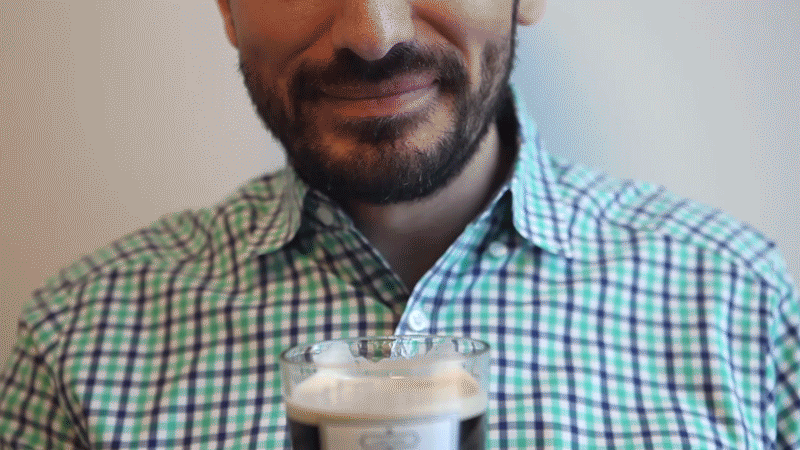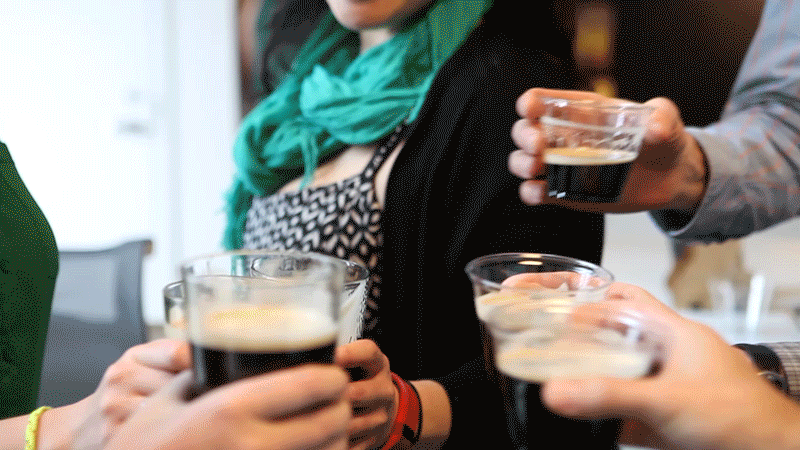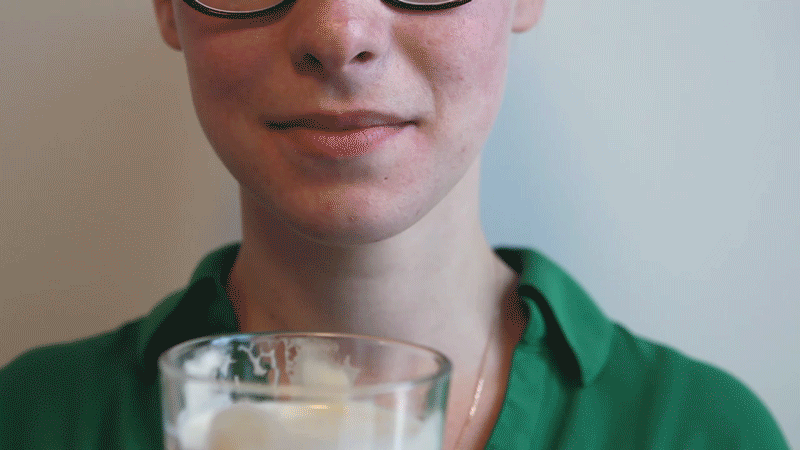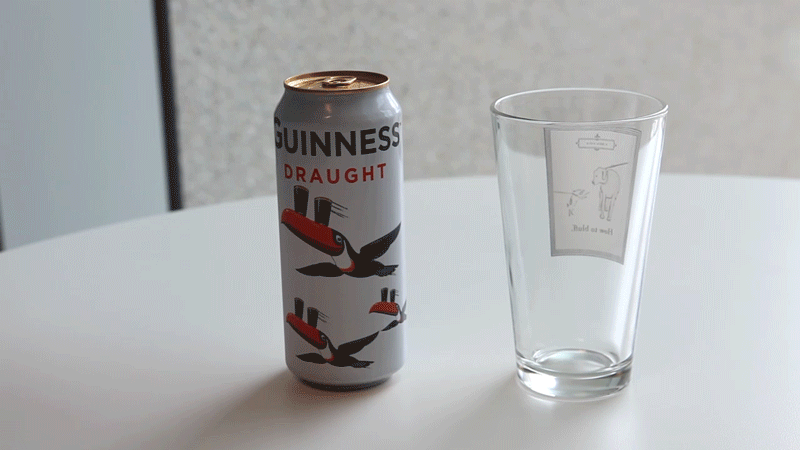Marnell describes how it works:
"Nitrogen bubbles have two properties that are really important: First of all, they're lighter than CO2 bubbles. And the second thing is that because they're so small, they bond together. So what you'll notice on a Guinness is that all the nitrogen settles to the top. But unlike a carbonated head, it doesn't dissipate into the air, it doesn't disappear as you go.
"Because they're all so small and they've bonded together, they'll remain firmly on the top. And that's what gives you that pillowy effect when you first have that sip of a Guinness draft stout. And that's also what has created that phenomenon of the Guinness mustache – you'll often see when somebody has that first lovely gulp of a Guinness draft beer, they're left with some nitrogen residue on their upper lip."
As for how the nitrogen interacts with the beer, Marnell says it's all about texture.
"What it allows you to do, is to give the drinker a beer that's very lightly carbonated, but without having the perception of being flat," he says. Marnell adds, "The nitrogen is acting as a guard for the beer, it's blocking off the elements, it's not allowing the oxygen in the air to get down to the beer and to eat up the little carbonation that's in there."
Aside from preventing oxidation, Marnell says, that cap of nitrogen should be left in place for another reason: it has a bitter taste that would dominate the beer's flavor if the whole foamy head is simply slurped off the top of a fresh pint.
The right way: Embrace the foam mustache.

If you're the type who enjoys a bit of history with your beer, Marnell has you covered – after all, he works for a brewery that's been in business for centuries, and which first exported beer to America back in 1817.
The use of nitrogen dates back to 1954, Marnell says, when a Guinness team led by a scientist named Michael Ash developed a beer dispensing system that uses a mix of gases — about 75 percent nitrogen, along with 25 percent of the more standard carbon dioxide.
If you want to thank Ash for his contributions to the world's beer enjoyment, you still can: He's currently 89 years old and lives in Wales, Marnell says.
For those who read this story's headline and thought that perhaps it had to do with responsible drinking, you're not wrong. Acknowledging that some people tend to focus more on drinking mass quantities than savoring quality on St. Patrick's Day, Marnell says that Guinness has launched a campaign asking people "to respect the beer," appreciate its flavor, and drink responsibly.
Cheers!

Copyright 2016 NPR.



